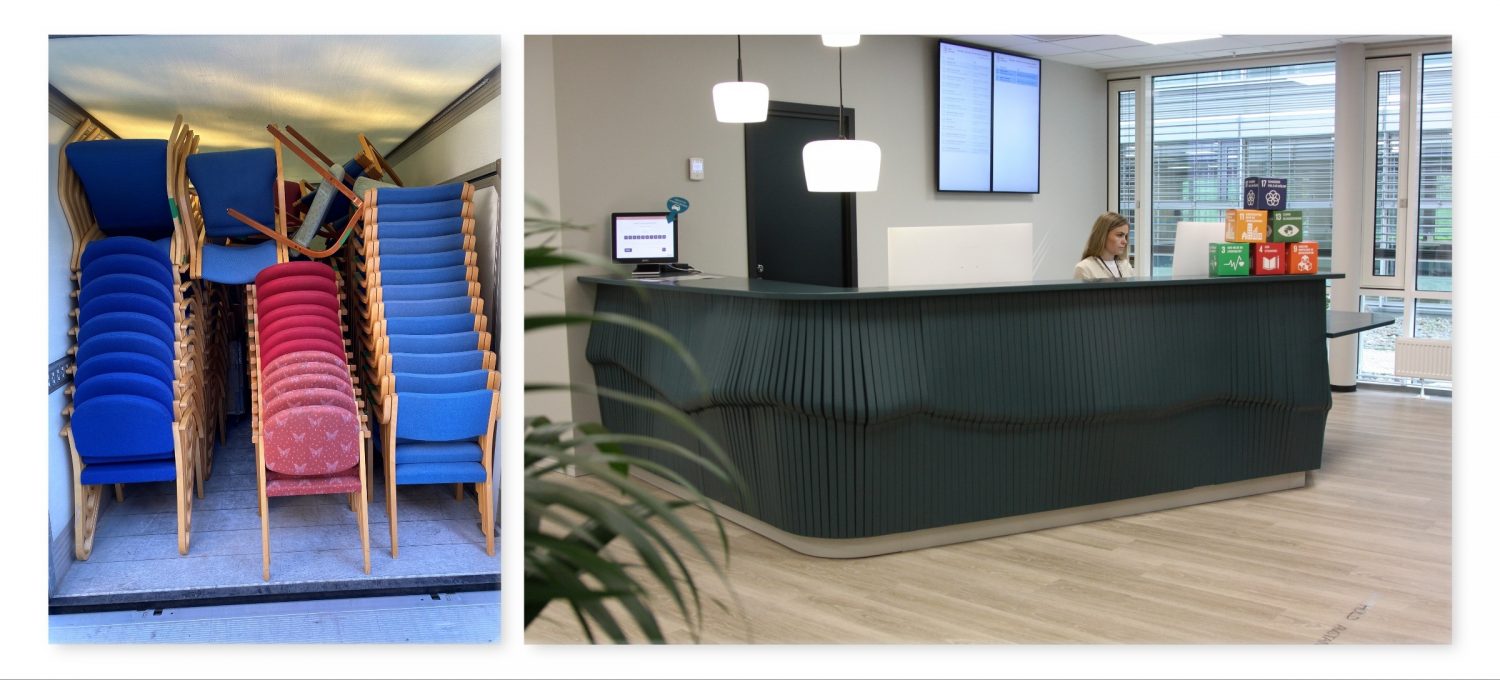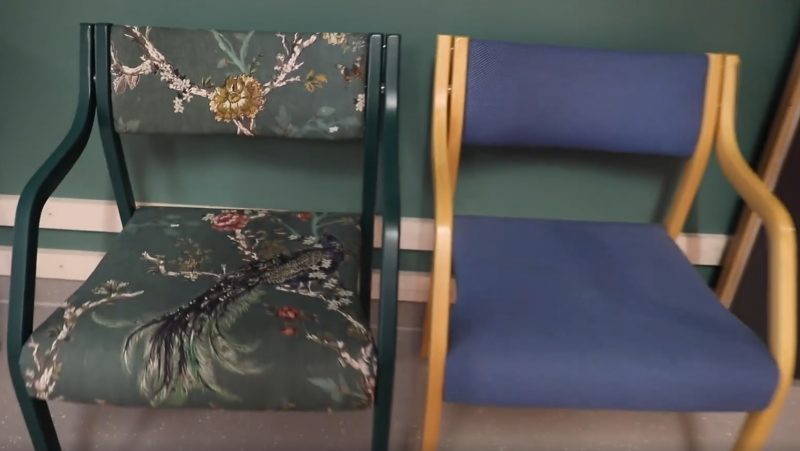In 2019 Asker Municipality, in the region of Oslo launched an ambitious reuse-project in collaboration with Loopfront.
Asker adopted the municipal sub-plan for "Climate, energy and Environment 2018-2030" and "Master plan recycling 2016-2025" where reuse and redesign are central points. Among other things, the municipality set a goal that 80% of the furniture and fixtures shall be reused.
We have interviewed Anja Østerli, Project manager for reuse and increased material recycling, in Asker Municipality.
 Michael Curtis (Loopfront), Anja Østerli (Asker Municipality)
Michael Curtis (Loopfront), Anja Østerli (Asker Municipality)
What motivated Asker to set ambitious goals of 80% waste reduction when it comes to furniture and inventory?
The new Asker municipality is based on the UN's sustainability goals and wants to be a leading force in circular economy. The investment in reuse of furniture is part of this strategy, and a pilot project was initiated for the reuse of office furniture related to the relocation of departments and employees in connection with the merge with the former Røyken and Hurum municipalities. It was a natural opportunity to think new, and all buildings that are part of the reorganization had their inventory mapped for reuse.
How is reuse and redesign integrated into the municipality's practices and routines? How well rooted is the reuse of materials and equipment among the management and in the organization?
Anchoring and communication at all levels in the municipality has been, and will continue to be, very important. The project has had good help from the management which has been supportive. It has also been important to get both internal unit managers and external architects on the team by informing and highlighting positive effects of reuse. In order to achieve the required cultural change - in relation to reusing materials rather than buying new - Asker has emphasized motivating the employees. We frequently use internal communication channels to make the work that is being done and the benefits it provides visible.
There is great potential in increasing value to used furniture and inventory by the help of redesign. Nevertheless, there is still a shortage of companies and organizations working with redesign at an industrial level. How has this been solved in Asker?
We have used internal and external resources, but there is great potential to bring more actors into the market. One of the municipality's work centers has chosen to work with reuse and redesign. Solbrå arbeidssenter (Solbrå working center) provides an individual work offer for people with disabilities, as well as providing new value and new life for materials. See clip from Kommunal Rapport:
In this project, they have produced various prototypes of material from old furniture that we had an abundance of in the project. For example:
- The typical "municipal laminate chair" of which there are plenty variations.
- Doors on cabinets that are broken.
- Desk tops in solid wood, from outdated desks without raising / lowering function.
From this material they have produced a lamp, bench, coffee table and given several laminate chairs a make-over.
They have also taken on the task of upholstering acoustic panels, cleaning and upholstering conference chairs.
Circular Ways is one of our external partners. They have been commissioned to produce a reception desk, wardrobe solutions and common area furniture - all produced from surplus material as listed above.

Reception desk (In process). Made by chair legs and desk tops.
It has been a year since you started the reuse project, what is the current status in Asker? Will 80% reuse of furniture become the new norm in the municipality for the future?
Reuse of office furniture in Asker municipality is still in an early phase. However, there is data based on what has been registered of furniture in the database so far, and the effects on economical and environmental savings below are based on this. Final results will be available when the relocation project is completed in the second quarter of 2021. As it looks now, we are approaching 50% reuse, and therefore we expect the following savings:
Economy: Over 11 million NOK saved
Reduction in costs comes in the form of the municipality avoiding buying new materials.
Environment: More than 60 tonnes reduced waste
This is a result of extended lifespan of existing furniture and avoiding the purchase of new ones. Waste calculated on the basis of registered weight.
Reuse will also reduce CO2 emissions with 107 tonnes.
This corresponds to approximately the same amount as emissions from energy supply for the entire Asker municipality in 2017.
Socially: contributes to work training
Moving furniture has contributed to work training for people through NAV and in addition we have a pilot project with several of the municipal work centers to make new furniture from reused material. They have also been given assignments such as repairing and cleaning furniture.
Want to learn more about this case, or how you can start reusing your materials?







